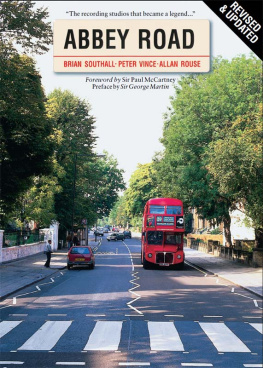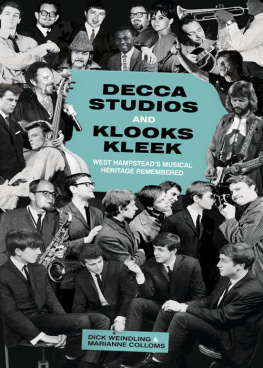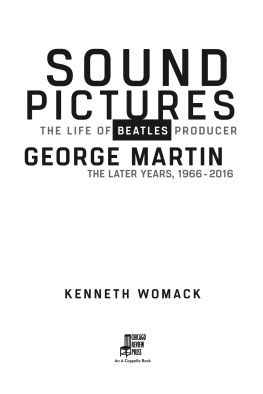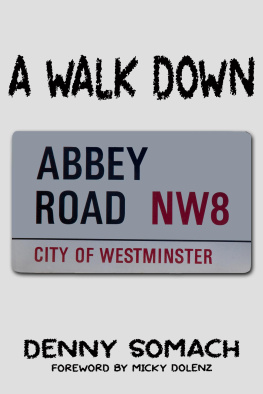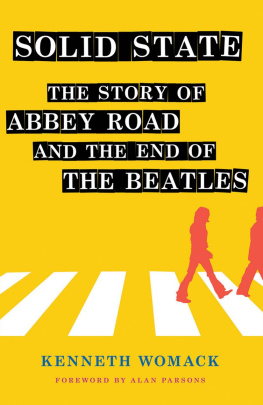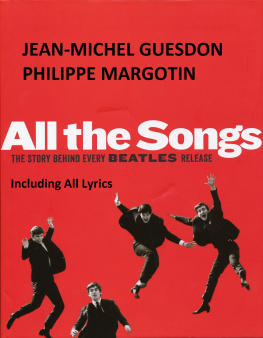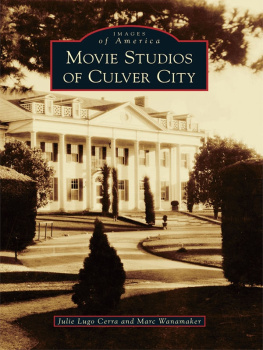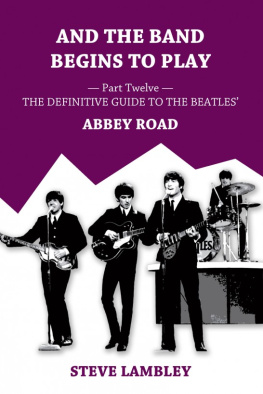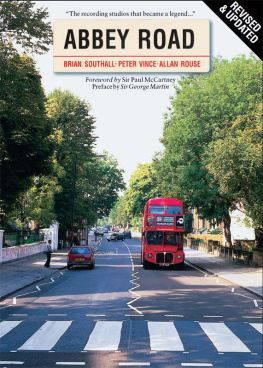Acoustics 1 The science of sound. 2 The natural sound within a studio which can be altered by changing the coverings and textures of walls, ceilings and floors.
ADT (automatic double tracking)An electronic means of duplicating a voice or instrument track with a fraction of a second delay to simulate the effect of more performers and thus enhance the sound. This developed from the original artificial double tracking.
AmbiophonyRefer to page 49.
Amplifying channels Because the volume of sound from microphones is very low, amplifiers in the mixing console boost the sound up to an acceptable level.
A&R (artists and repertoire)The original term applied to a record producer, his job being to find suitable repertoire for the artist to record.
Baffle boardsIn this context, refers to four large sound-absorbing panels, some 15 feet wide by 20 feet high, which can be opened out from the studio walls, thus creating separate isolated areas within a large studio.
Balance engineerThe person responsible for the positioning of musicians, microphones and operating the mixing console.
Basic rhythm trackThe least number of instruments that are able to be recorded before subsequent instruments and/or vocals are overdubbed.
Column ampsAmplifiers of the type used by pop groups, usually taking the form of tall cabinets containing several loudspeakers.
Crossed pairs Two identical microphones mounted adjacent to each other, and at such an angle that a natural stereo recording can be made.
Cutter head The electrical device which, by means of a sapphire or diamond stylus, actually cuts the groove on the lacquer disc.
Dash Areplacement lacquer.The lacquers supplied from one recording are termed, for example, dash 2 or dash 35, depending on the number of replacements required.
Decibel (dB)A widely used term relating to the power of sound levels.
Demo A simple, basic recording of a new musical work literally a demonstration.
DVDDigital Versatile Disc
Disc cutting The process of cutting the groove in the lacquer disc.
Drop-in The ability to change instantly from replay to record on one or more tracks of a multi-track machine, enabling the replacement of a particular section of music.
DubbedCopying from a disc or pre-recorded tape on to another tape, or the combining of two or more of such recordings into a composite.
Dynamic peaks Sudden large increases in sound levels, the loudest points during a recording.
Echo chamber A large room of non-uniform shape with numerous reflective surfaces and containing a loudspeaker and microphone. Any sounds routed through the loudspeaker will create an echo effect similar to a tiled bathroom, these are then received by the microphone and combined with the original sound source.
EditingCutting the recorded tape and joining together chosen sections to form a complete and faultless work.
EMT platesA widely accepted form of artificial echo, patented and manufactured by the West German company, EMT. It comprises a large thin steel plate, some 8 feet by 5 feet, suspended in a framework. This plate is made to vibrate in much the same way as a loudspeaker cone. The vibrations are received by two pick-ups fixed at the boundaries of the plate. The duration of the vibrations can be varied by a mechanical damping device.
EqualiserA sophisticated form of tone control which has the facility to be able to raise or lower the levels of selected frequencies.
FadersSliding volume controls, as distinct from the conventional rotary type.
5.1One of the surround sound formats, 5.1 comprises 3 speakers in the front: left, centre and right, 2 speakers in the rear: left and right and the '.1' refers to the effects channel that provides extremely low end frequencies (sub-bass).
Frequencies Vibrations creating low to high pitch sounds, depending on the number of such vibrations per second, usually referred to as Hertz (Hz), eg, 50 Hz creates a low bass sound, 10,000 Hz a high treble sound. The response of the human ear is approximately 20-20,000 Hz.
Gofor A title once given to junior recording assistants, derived from, Gofor some coffee Gofor some tea, etc.
HertzUnit of frequency ( = 1 cycle per second).
Lacquer disc A high quality aluminium disc coated with a thin layer of black acetate, used in the cutting process.
Limiter An electronic device which restrains sudden increases in volume, thus preventing possible overloading.
LoopA length of tape joined to form a continuous Loop so that when it is played on a tape machine it repeats the recorded signal ad infinitum.
Magnetic delay drums A motorised rotating drum which has its outer face coated (as with magnetic tape) to allow recordings to be made on it. These recordings are reproduced via numerous playback heads placed strategically around the drums circumference, thus delaying the recorded signal by varying amounts.
Master That which is decided as being the best version of a particular recording.
MasteringThe act of cutting the master disc.
Micro groove recordThe original term given to the LP disc.
Mixing (or Re-mixing)Combining together the various tracks of a multi-track recording, to produce a mono, or more commonly, stereo master tape.
Mono (Monophonic)Single channel reproduction.
MORLiterally means middle of the road, a term used to describe music that is neither pop nor classical.
Moving coil microphone A type of microphone where sound striking a diaphragm causes a coil to vibrate within a magnetic field, thus creating an electrical impulse. This is basically the reverse operation of a loudspeaker.
Moving coil recorderSimilar in operation to a loudspeaker except that the coil is attached to a cutting stylus rather than a diaphragm; the forerunner of todays cutter head.
Multi-trackThis applies to any form of recording other than mono or stereo and it can refer to any one of 3, 4, 8, 16, 24 or 48 tracks. The width of tape used varies according to the number of tracks, and is usually 1 inch for 4 and 8 track, and 2 inch for 16 or 24 track ( inch for both 24 and 48 track digital formats).
MutingThe facility to switch off any incoming signal to a mixing desk. In the case of computerised mixing desks this can be programmed to occur at any predetermined point.
Non-directionalA term applied to a microphone which receives sounds from all directions, as distinct from a cardioid microphone, which will receive sounds on one side only, and a figure of eight microphone, receiving sounds on two opposite sides.
OverdubbingThe addition of instruments and/or vocals to an unfinished multitrack recording.
Pre-mix box A box containing four fader volume controls which could accept four microphones, the output of this box being fed into one input of a mixing console effectively increasing its recording capabilities.
Ribbon microphone A type of microphone in which electrical impulses are generated by the movements of sound waves on a metal ribbon suspended in a magnetic field.

